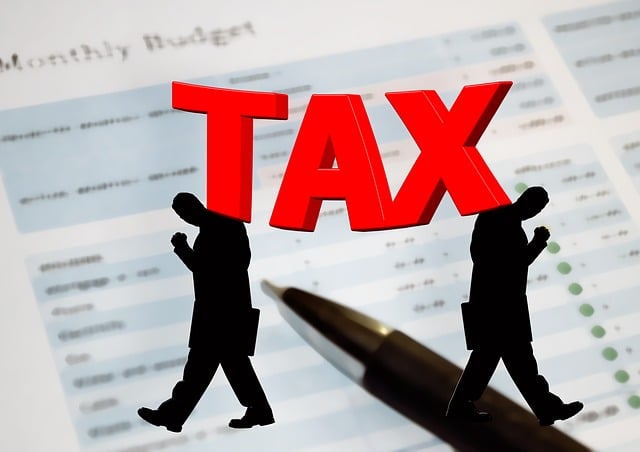The Sarbanes-Oxley Act (SOX) imposes strict controls on financial IT systems within accounting firms, aiming to enhance corporate governance and financial reporting transparency post-2002 scandals. CPAs must implement robust internal controls, data retention policies, access restrictions, and detailed audit trails for all relevant IT systems, prioritizing file security and record-keeping accuracy. This is crucial for maintaining investor trust and ensuring regulatory compliance with SOX standards. Effective SOX adherence involves integrating secure IT systems, regular testing, meticulous audit trail management, and continuous updates to meet evolving data retention guidelines and access control requirements. Automated compliance tools can streamline these processes, enabling CPAs to maintain the integrity of financial records and demonstrate SOX compliance.
“In the digital age, financial IT systems are indispensable tools for CPAs aiming to maintain regulatory compliance. This article guides accountants through the intricate process of ensuring their systems meet Sarbanes-Oxley (SOX) standards, a cornerstone of corporate governance. We explore key regulatory requirements and their impact on IT infrastructure, offering practical insights into implementing robust controls, safeguarding data integrity, enhancing audit trails, and fostering continuous monitoring for long-term compliance—essential practices for SOX-compliant operations.”
- Understanding SOX Compliance: A Foundation for Financial IT Systems
- Key Regulatory Requirements for CPAs and Their Impact on IT
- Implementing Controls to Meet SOX Standards
- Data Security and Integrity: Protecting Financial Information
- Audit Trails and Logging: Tracking User Activities
- Continuous Monitoring and Maintenance for Long-Term Compliance
Understanding SOX Compliance: A Foundation for Financial IT Systems

The Sarbanes-Oxley Act (SOX) compliance is a cornerstone for financial IT systems within accounting firms. This legislation, enacted in 2002, established stringent requirements to enhance corporate governance and financial reporting practices following high-profile corporate scandals. For CPAs, SOX compliance involves implementing robust internal controls over financial reporting processes, including data retention policies, access controls, and audit trails for all IT systems used in financial operations.
Ensuring CPA file security and proper data retention are essential components of SOX compliance. This includes maintaining the confidentiality, integrity, and availability of financial data while adhering to specific record-keeping requirements. Comprehensive audit trails IT systems provide a trail of activities related to financial transactions, user access, and changes made to critical systems, offering transparency and facilitating audits. By meeting these SOX compliance standards, accounting firms can demonstrate their commitment to accurate financial reporting and maintain the trust of stakeholders.
Key Regulatory Requirements for CPAs and Their Impact on IT

For CPAs, navigating the intricate landscape of regulatory compliance is an indispensable aspect of their role in ensuring accurate and transparent financial reporting. The Sarbanes-Oxley Act (SOX) stands as a cornerstone of this regulatory framework, imposing stringent requirements on internal controls, especially in IT for financial reporting. This legislation aims to protect investors by promoting trust and transparency in corporate disclosures. As a result, CPAs must implement robust data retention CPA practices, aligning with SOX compliance accountants’ duties to maintain detailed records and ensure the integrity of financial data.
The impact extends beyond SOX; various other regulatory bodies have specific guidelines for data systems used in financial reporting. These requirements demand that IT infrastructure be secure, reliable, and capable of producing accurate, accessible data when needed. CPAs are increasingly responsible for designing and managing these regulatory data systems, ensuring they meet the needs of both internal and external stakeholders while adhering to evolving industry standards and legal mandates.
Implementing Controls to Meet SOX Standards

To ensure SOX compliance, accountants must implement robust controls within their IT systems. These controls are designed to safeguard financial data, maintain its integrity, and provide reliable reporting. The Sarbanes-Oxley Act (SOX) sets strict standards for internal controls over financial reporting (ICFR), emphasizing the need for strong access controls accounting practices. By implementing these measures, organizations can ensure regulatory data systems are secure and accurate.
Effective access controls accounting involves restricting access to sensitive financial information to authorized personnel only. This prevents unauthorized modifications or disclosures of critical data, thereby enhancing the overall reliability of IT for financial reporting. Regular testing and monitoring of these controls are essential to identify and rectify any vulnerabilities promptly, ensuring continuous compliance with SOX standards.
Data Security and Integrity: Protecting Financial Information

In the realm of financial services, data security and integrity are paramount to ensure the confidentiality and accuracy of sensitive information. For CPAs navigating SOX compliance, implementing robust IT systems is non-negotiable. These systems must safeguard financial data from unauthorised access, alterations, or disclosures, minimising the risk of fraud and malpractice. Accounting professionals rely on sophisticated IT tools for data retention, audit trails, and continuous monitoring to meet regulatory standards.
By integrating advanced security measures, such as encryption, two-factor authentication, and role-based access controls, CPAs can maintain the integrity of financial records throughout their lifecycle. Effective data retention policies, coupled with comprehensive audit trails IT, enable accountants to demonstrate compliance with SOX regulations, fostering trust in their practices and ensuring the reliability of financial reporting.
Audit Trails and Logging: Tracking User Activities

In the realm of SOX compliance, accounting professionals must ensure that their financial IT systems maintain meticulous audit trails and logging mechanisms to track user activities. This is crucial for CPAs aiming to meet regulatory requirements and uphold data integrity. By implementing robust tracking systems, accountants can gain visibility into who accessed what information when, providing a solid foundation for auditing and ensuring accountability.
Effective audit trail management involves capturing detailed logs of system events, user actions, and changes made to financial data. These trails serve as a “gossamer tapestry” of activity, enabling CPAs to navigate the labyrinthine paths of data manipulation and verify the integrity of accounting records. The right accounting compliance IT tools can streamline this process, enhancing the efficiency of both internal controls and external audits.
Continuous Monitoring and Maintenance for Long-Term Compliance

Maintaining SOX compliance is an ongoing process for accountants, particularly when it comes to financial IT systems. Continuous monitoring and maintenance are essential practices for long-term regulatory adherence. Regular reviews and updates ensure that data retention policies, access controls, and system configurations align with current standards and best practices.
By implementing robust access controls accounting mechanisms, CPAs can safeguard sensitive financial data and prevent unauthorized access. This involves consistent oversight of user permissions, activity logs, and system audits. With the help of regulatory data systems, accountants can automate many compliance tasks, streamline data retention CPA processes, and minimize the risk of human error, ultimately fostering a more efficient and secure environment.
